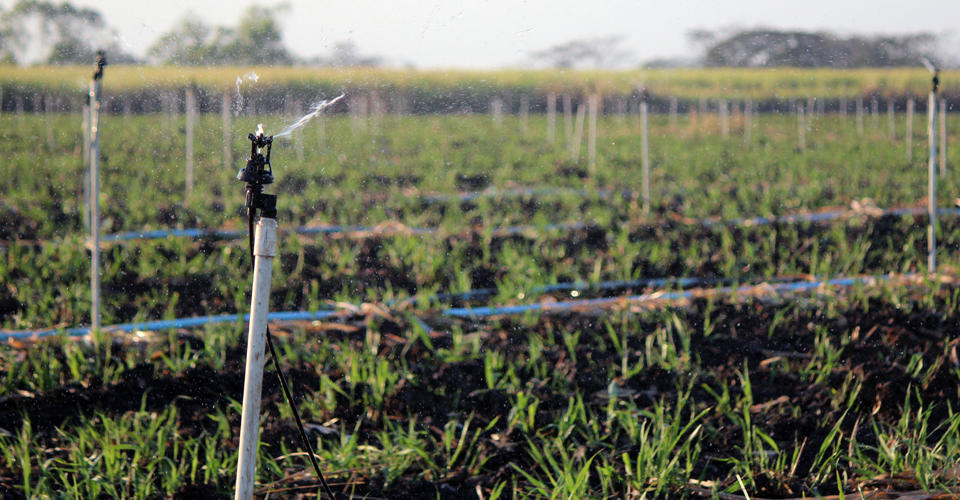From Sugarcane Product to Energy: The Multiple Uses of Sugarcane
From Sugarcane Product to Energy: The Multiple Uses of Sugarcane
Blog Article
The Trip of Sugarcane: From Harvest to Everyday Products
The journey of sugarcane is a complex process that begins with meticulous farming and culminates in a selection of products that penetrate our everyday lives. As we discover the various aspects of sugarcane's journey, its role in sustainability and the more comprehensive implications for our setting come into sharper focus.
Growing of Sugarcane
The cultivation of sugarcane is an essential agricultural procedure that requires details ecological problems and monitoring methods. Optimum growth happens in subtropical and tropical regions where temperature levels range between 20 ° C and 32 ° C. Adequate rains or irrigation is essential, as sugarcane flourishes in moist dirt with well-drained conditions (sugarcane product). Soil high quality substantially influences return; therefore, farmers usually conduct soil tests to identify nutrient demands
This technique helps with effective gathering and maximizes sunshine exposure. Plant rotation and intercropping are suggested techniques to boost soil fertility and minimize parasite invasions.
Timely application of these plant foods can dramatically improve sugar yields. On the whole, successful sugarcane farming pivots on a combination of environmental stewardship, strategic planning, and continuous administration practices.
Collecting Strategies
Effective sugarcane growing culminates in the gathering phase, which is critical for taking full advantage of yield and guaranteeing top quality. The timing of the harvest is vital; sugarcane is normally collected when sucrose degrees peak, generally in between 10 to 18 months after planting. This period varies based upon climate, soil type, and sugarcane range.
Harvesting techniques can be broadly categorized right into guidebook and mechanical techniques. Hand-operated harvesting is labor-intensive, depending on proficient workers that utilize machetes to reduce the stalks close to the ground. This approach allows for careful harvesting, where just the ripest walking sticks are picked, consequently improving overall sugar material.
On the other hand, mechanical harvesting has actually obtained appeal due to its effectiveness and cost-effectiveness. Specialized farmers outfitted with reducing blades and conveyor systems can process big locations quickly, significantly decreasing labor expenses. Nevertheless, this technique may bring about the addition of premature walking sticks and a potential decline in sugar quality.

No matter of the approach used, making sure that harvested canes are moved swiftly to refining facilities is vital. Trigger dealing with minimizes perishing and protects the stability of the sugarcane, establishing the stage for optimum handling.
Processing Techniques
Handling sugarcane involves several critical steps that change the harvested stalks into usable products, mainly sugar and molasses. The first stage is washing the walking stick to get rid of soil and particles, followed by the extraction of juice via squashing or milling. This process commonly utilizes heavy rollers that damage the walking stick fibers to launch the sweet fluid consisted of within.
Once the juice is removed, it undergoes explanation, where pollutants such as soil bits and bagasse are removed. This is usually accomplished by including lime and heating up the juice, permitting sedimentation. The cleared up juice is after that concentrated via evaporation, where water web content is decreased, causing a thick syrup.

Ultimately, the handling of sugarcane not only creates sugar and molasses yet likewise lays the groundwork for different by-products, which will be discovered in subsequent discussions.
Products Derived From Sugarcane
Sugarcane is a functional plant that produces a wide selection of items past simply sugar and molasses. Among the main spin-offs are ethanol and biofuels, which have actually gained importance as renewable resource sources. Ethanol, produced with the fermentation of sugarcane juice, works as an alternate to fossil fuels and is typically combined with gas to produce cleaner-burning fuels, minimizing greenhouse gas emissions.
In addition, sugarcane is a substantial source of bagasse, the fibrous residue staying after juice removal. Bagasse is utilized in different applications, including the production of paper, biodegradable packaging, and as a biomass fuel for energy generation. Its use not only reduces waste but likewise enhances the sustainability of sugarcane handling.
Furthermore, sugarcane-derived products include the food industry, where it works as an all-natural flavoring agent and sugar in various cooking applications. In the realm of cosmetics, sugarcane removes are included right into skincare products as a result of their all-natural exfoliating residential properties.
Ecological Impact and Sustainability
The cultivation and handling of sugarcane have considerable implications for ecological sustainability. This plant requires significant water sources, typically resulting in deficiency of regional water supplies and influencing bordering communities. Additionally, the usage of fertilizers and chemicals in sugarcane farming can lead to dirt deterioration and waterway air pollution, positioning threats to biodiversity.

Sustainable sugarcane farming additionally promotes soil wellness through crop turning and reduced tillage, boosting carbon sequestration. The adoption of these methods not just sustains environmental stability click here now yet also enhances the strength of farming communities against climate adjustment.
Conclusion
In summary, the journey of sugarcane includes numerous phases from cultivation to processing, eventually causing a wide range of items. The value of sugarcane extends beyond mere sweeteners, adding to eco-friendly power through ethanol production, lasting packaging using bagasse, and all-natural extracts for cosmetics. This multifaceted crop plays a vital duty in both dietary enrichment and environmental sustainability, highlighting its significance in contemporary agricultural and industrial methods.
Effective sugarcane cultivation culminates in the gathering phase, which is essential for maximizing yield and ensuring quality. The timing of the harvest is essential; sugarcane is usually gathered when sucrose levels top, typically between 10 to 18 months after planting.Handling sugarcane entails numerous important actions that change the gathered stalks into usable items, largely sugar and molasses.Sugarcane is try these out a flexible crop that yields a broad array of items past just sugar and molasses. Additionally, the look at here now use of plant foods and chemicals in sugarcane farming can result in dirt deterioration and waterway air pollution, posturing risks to biodiversity.
Report this page